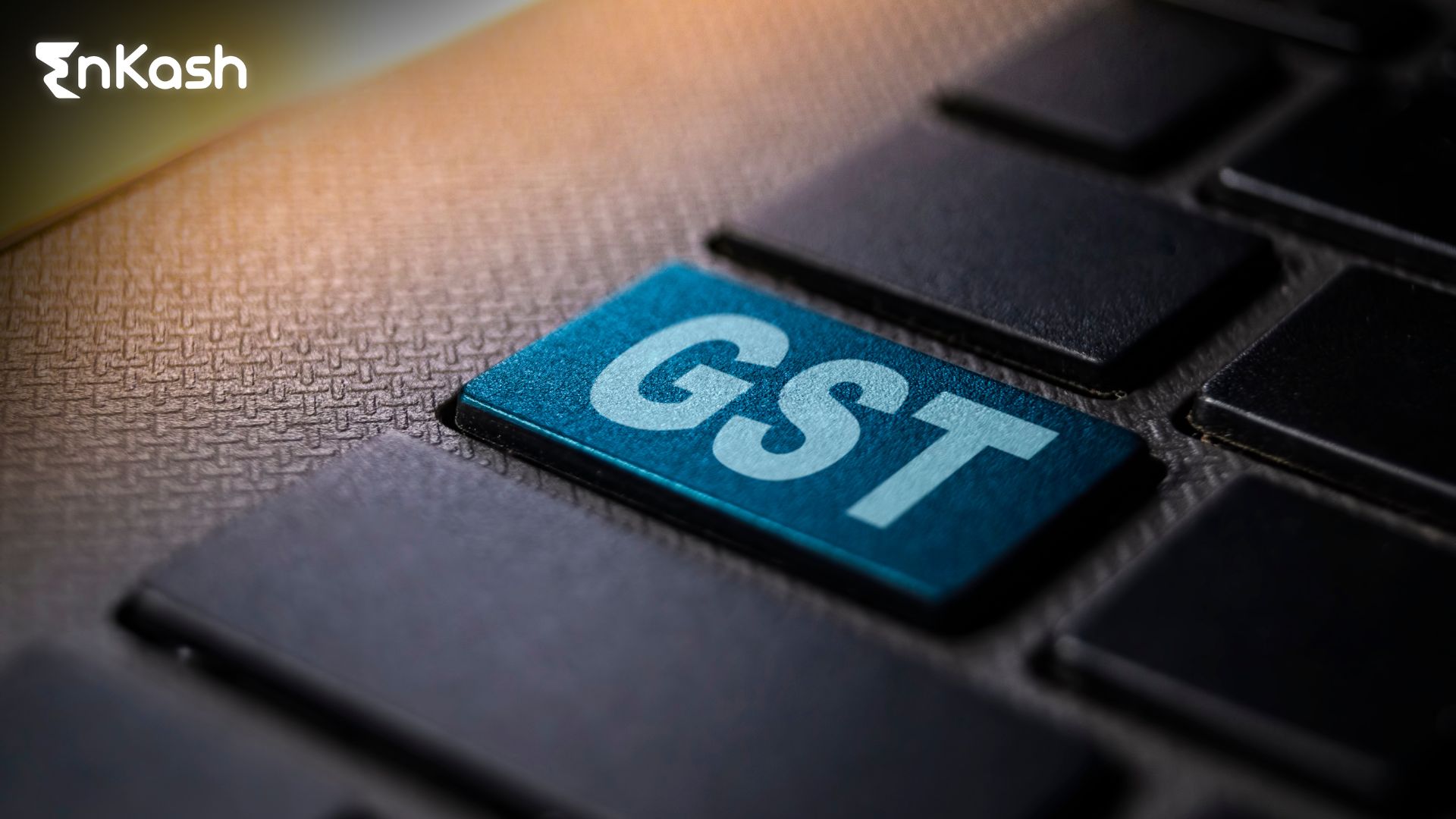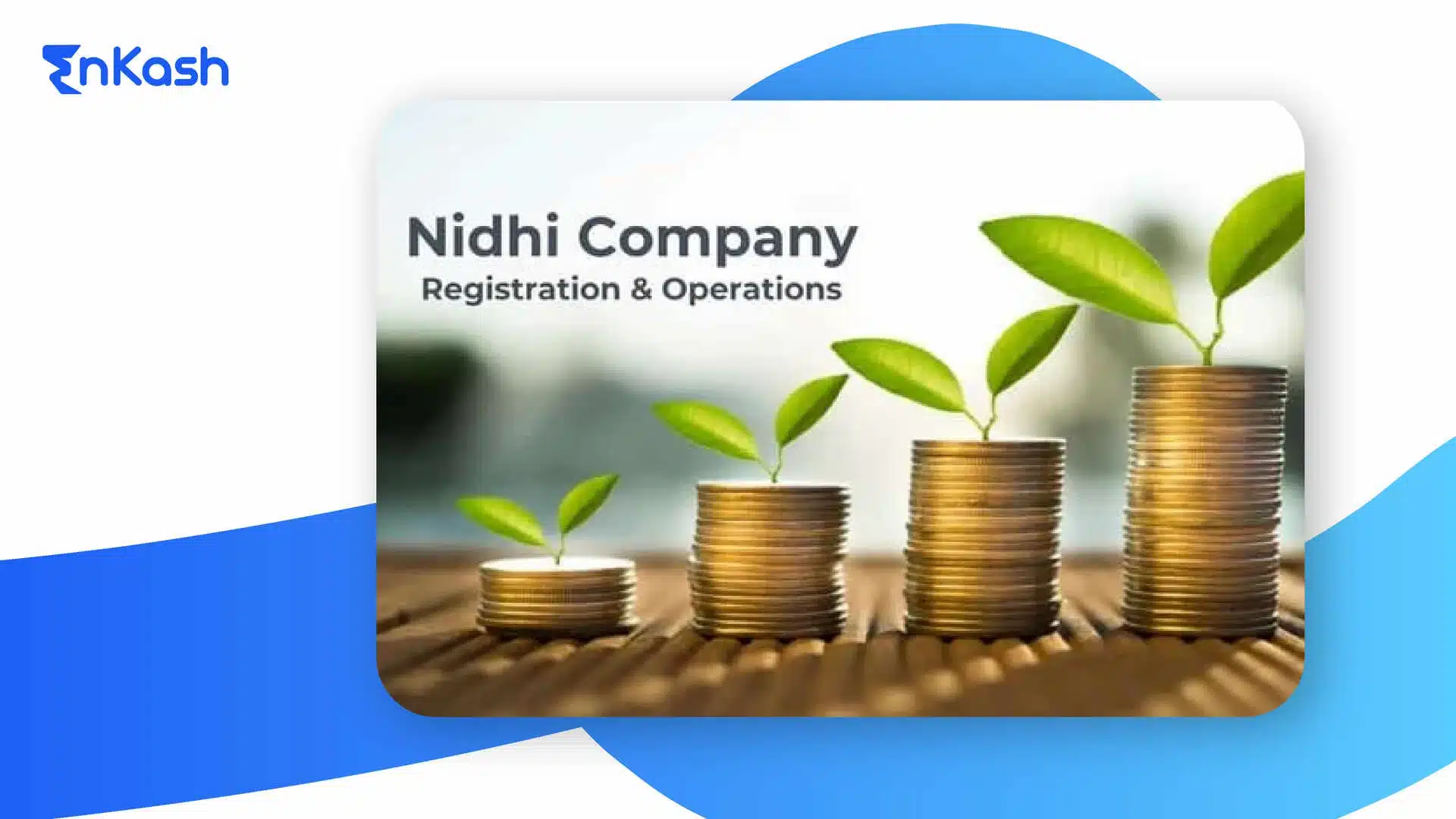The Goods and Services Tax is one of the most significant reforms in India’s tax history. It replaced a complicated system of indirect taxes with a single, unified framework. Before its introduction, businesses were burdened with multiple layers of taxes at the central and state levels. Each transaction attracted different levies, making compliance difficult and increasing costs for both suppliers and consumers.
Introduced on July 1, 2017, the Goods and service tax aimed to simplify the tax structure and create a seamless national market. Instead of dealing with excise duty, VAT, service tax, and entry tax separately, businesses now handle everything under one umbrella. This has reduced cascading taxes, made pricing more transparent, and encouraged formalization of the economy.
When people ask what is GST, they are essentially asking about a tax that is levied on the supply of goods and services throughout India. It is destination-based, meaning tax is collected where the goods or services are consumed, not where they are produced. This has helped streamline revenue collection and reduce disputes between states and the central government.
The Goods and service tax is designed to be neutral in terms of location and business size. Whether it is a large corporation or a small business, the structure remains the same, with a few threshold-based relaxations. Today, compliance is largely digital. From registration to filing returns, most processes are done online through the GST portal, creating a paperless and traceable system.
In the coming sections, we will explore what is GST in more depth, including how it works, who needs to register, how to file a GST return, what the GST slabs are, and how to manage tasks like download GST certificate or understanding form gst reg 06.
What is GST? Full Definition and Concept
The Goods and Services Tax is a nationwide system that was designed to clean up India’s complicated tax landscape. Before it was introduced, businesses had to deal with a patchwork of central and state levies. Each transaction was taxed multiple times, with no clear system to claim credit for taxes already paid. This created confusion, paperwork, and a higher cost of doing business.
GST was rolled out in 2017 to fix this. Instead of separate taxes like excise duty, service tax, VAT, and entry tax, everything was brought under a single framework. This system is meant to be simple. It taxes the value added at every stage of the supply chain, but allows businesses to claim credits for taxes already paid on inputs. The result is that tax is charged only on the net value added, not the gross sale.
GST is also destination-based. That means the tax goes to the state where the product or service is finally consumed. For example, if a company in Maharashtra sells to a customer in Delhi, the tax is paid to Delhi. This helps balance state revenues and removes the old problem of cross-border tax disputes.
Another big change is in how compliance works. Most of the process is now done online. From registration and return filing to tracking payments and refunds, everything happens through a centralised portal. This makes it easier to monitor transactions and reduces the scope for tax evasion.
The system is structured into three main types: central, state, and integrated taxes. These apply depending on whether the sale is happening within a state or between states. Each has its own rules, but they work together to ensure that the end consumer pays a single effective tax.
For anyone asking what GST is, the simple answer is that it’s a tax system that has replaced dozens of others to make life easier for both governments and businesses. It aims to create a common national market, make taxation transparent, and bring more players into the formal economy.
Over time, the law has evolved through amendments and decisions made by the GST Council. As more sectors come under its scope and more businesses begin using the system, GST continues to reshape the way India collects and manages its indirect taxes.
Read more: How to Pay GST on Advance Payments
Types of GST and Their Application
The Goods and Services Tax in India is divided into different components to ensure fair distribution of tax revenue between the central and state governments. Each type has a specific role and is applied based on the location of the buyer and seller.
Types of GST
- Central GST (CGST)
Collected by the central government on all transactions happening within a single state. This component helps the centre generate revenue from domestic trade and services. - State GST (SGST)
Collected by the state government on the same intra-state transaction where CGST is applied. Both CGST and SGST are usually charged at equal rates and credited to their respective authorities. - Integrated GST (IGST)
Charged on transactions where goods or services move from one state to another. This tax is collected by the central government and later shared with the destination state. - Union Territory GST (UTGST)
Applied instead of SGST in union territories that do not have their own legislative assemblies. It works similarly to SGST but is managed by the centre.
Also read: What is the difference between CGST, SGST and IGST
Application of Each Type
- Intra-state transactions
Both CGST and SGST apply. For example, if a seller in Gujarat sells to a buyer in the same state, the invoice includes equal percentages of both taxes. - Inter-state transactions
IGST is applied. Suppose a business in Delhi supplies to a client in West Bengal, only IGST is charged, and the destination state later receives its share from the centre. - Supply within union territories
CGST and UTGST apply together. This is relevant for businesses operating in locations like the Andaman and Nicobar Islands or Daman and Diu.
Businesses must know which tax type applies to their transaction before filing a GST return, as misclassification can lead to penalties and loss of input tax credit. The clarity in classification also helps in seamless credit flow and reduces the chances of disputes between tax jurisdictions.
Read more: How to Register for GST in India
GST Rate Structure: The GST Slabs
When the Goods and Services Tax was implemented in India, one of its most crucial features was the introduction of structured tax slabs. These slabs were designed to balance revenue collection with affordability, while ensuring essential goods remained accessible.
Overview of GST Slabs
The GST system currently operates on a multi-tier rate structure with four major slabs:
- 0% slab
This includes essential items that are often consumed by the average Indian household. Items like unbranded food grains, fresh vegetables, milk, and certain educational materials fall under this category. The idea is to keep daily necessities tax-free and reduce the financial burden on the common consumer. - 5% slab
This is applied to items of basic necessity that are not entirely essential but are still widely used. Products like packaged food items, footwear under a certain price, and some types of medicines fall into this bracket. - 12% and 18% slabs
These slabs cover a broad range of standard goods and services. They are the most commonly used rates under GST. Most manufactured goods, processed foods, electronics, and household appliances fall under these two slabs. The aim is to maintain affordability while ensuring adequate tax revenue for the government. - 28% slab
This is the highest rate and is reserved for luxury goods and sin items. Products like high-end cars, tobacco, aerated drinks, and luxury furniture are taxed at this rate. The government uses this slab both to discourage consumption and to increase revenue from non-essential goods.
Factors That Influence Slab Allocation
Each product or service is carefully placed into a slab based on:
- Its essentiality in daily life
- Its economic importance
- The level of impact it has on the common man
- Revenue potential for the government
The GST Council regularly reviews these categories. Based on market needs, economic factors, or demands from industries, items can be shifted from one slab to another.
Slab Changes Over Time
Since its rollout, there have been several revisions in GST rates. These changes are typically recommended during council meetings and often aim to reduce the tax burden on consumers or help struggling sectors. For instance, the rate on hotels and restaurant services has been changed multiple times to respond to industry needs.
Businesses must be aware of the latest slab rates for the goods or services they deal with. Applying the wrong rate can lead to overcharging customers or underpaying taxes, both of which can result in penalties.
Before generating an invoice, it is helpful to refer to the latest GST slabs list available on the official portal or from verified sources. It ensures accuracy in billing and smooth filing of the GST return.
Read more: How to Search GST Number by PAN
GST Registration: Process, Fees & Limit
GST registration is mandatory for businesses that cross a certain annual turnover or fall under specific categories defined by the tax authorities. The registration process has been designed to be fully online, quick, and transparent to make compliance easier, even for small business owners.
Who Needs GST Registration?
Not every business in India needs to register under GST. However, it becomes mandatory in the following situations:
- Businesses whose turnover exceeds the prescribed GST registration limit. For most states, the limit is ₹40 lakhs for goods and ₹20 lakhs for services. In special category states, this limit is lower.
- Individuals or entities involved in interstateinter-state supply of goods.
- Casual taxable persons and non-resident taxable persons.
- E-commerce operators and aggregators.
- Businesses paying tax under the reverse charge mechanism.
- Those who are required to deduct tax at source.
It’s also important to note that voluntary registration is allowed. Businesses that fall below the threshold may still register to avail input tax credit and gain a competitive edge.
Step-by-Step GST Registration Process
Registering for GST is a digital procedure and requires access to the GST portal. Here’s how the process works:
- Visit the official portal at gst.gov.in.
- Click on ‘New Registration’ under the Services tab.
- Fill in basic details such as legal name, PAN, email ID, and mobile number.
- Verify the OTPs received on your mobile and email.
- Receive a Temporary Reference Number (TRN).
- Use the TRN to log in again and complete the application with business details, promoter info, principal place of business, bank account information, and upload supporting documents.
- Submit the application using Digital Signature Certificate (DSC) or Aadhaar authentication.
Once approved, the applicant receives a unique 15-digit GSTIN and a digital GST certificate, confirming successful registration.
Understanding Form GST REG 06
When your application is approved, you are issued Form GST REG 06. This document acts as your formal registration certificate. It includes essential details like your GSTIN, business legal name, trade name, constitution of business, and the types of GST you are registered for.
This certificate must be displayed at your place of business, and the GSTIN should be quoted on all invoices and returns.
GST Registration Fees
There is no government charge for GST registration. However, businesses often hire professionals to manage the registration process, especially if they lack time or are unfamiliar with documentation. The GST registration fees in such cases depend on the service provider and can range from ₹500 to ₹2500 or more, depending on complexity and urgency.
Even though there’s no mandatory cost from the government, it’s crucial that the registration is done correctly to avoid errors in future filings or audits.
Why Registration Matters
Once registered, businesses become part of the formal tax system. They can claim input tax credit, expand operations across states, and gain better trust among suppliers and customers. It also ensures timely filing of the GST return, which is mandatory for registered entities.
Read more: Complete GSTIN Registration Guide
GST Certificate and Its Importance
Once a business successfully registers under the GST system, it receives a GST certificate. This document acts as proof of registration and includes important details such as the business name, registration number, constitution of the business, and the types of GST applicable.
The certificate is issued in a digital format by the GST Network. It contains a unique 15-digit GSTIN that must be used on all invoices, returns, and other official documents. The certificate also specifies the date from which the GST is effective, along with the business’s principal place of operations.
Holding a GST certificate is not just a legal formality. It is mandatory for compliance and must be displayed at the place of business where it can be clearly seen by customers or government officials. Failure to do so can lead to penalties or legal complications.
In today’s business environment, being GST-compliant adds credibility. Whether you’re dealing with vendors, applying for loans, or bidding for tenders, having a valid certificate positions the business as structured and transparent. It also allows for seamless input tax credit, provided all invoices are properly issued and documented.
For business owners, it is essential to understand how to download a GST certificate whenever needed. The certificate can be accessed through the official GST portal:
- Log in to gst.gov.in with your credentials.
- Navigate to the ‘Services’ tab, then select ‘User Services’.
- Click on ‘View/Download Certificate’.
- The certificate will open in PDF format, which can then be saved or printed.
There is no need to request a physical copy from any authority. The digital version holds full legal validity and can be presented as required.
It’s also worth noting that if the business undergoes any significant changes, —like a change in address or constitution, the certificate must be updated accordingly. Staying up to date with these details helps ensure that future GST return filings are not flagged for inconsistencies.
Also read: Importance of paying GST
GST Returns: Filing Process and Timelines
Filing GST returns is a crucial part of staying compliant under the tax system. Every business registered under GST is required to report its sales, purchases, input tax credit, and tax liability through periodic returns. These returns help both the government and the taxpayer keep track of transactions and ensure that tax is paid correctly.
What is a GST Return?
A GST return is a document filed by a registered business that contains details of its outward and inward supplies. It includes tax collected on sales, tax paid on purchases, and the net tax payable after adjusting input credits. These details are submitted to the GST portal within the specified deadlines.
The type and frequency of return filing depend on the category of the taxpayer. Regular taxpayers, composition dealers, e-commerce operators, and others all follow different schedules.
Common GST Return Forms
- GSTR-1
This is used to report details of outward supplies of goods and services. It must be filed monthly or quarterly, depending on the turnover. - GSTR-3B
A summary return where taxpayers declare total sales, input credits, and final tax payable. It must be filed monthly by all regular taxpayers. - GSTR-9
The annual return that summarizes the entire year’s tax activity. Businesses with a turnover above the prescribed limit must file this once a year. - CMP-08
For those registered under the composition scheme, this form is used to declare turnover and make a fixed tax payment every quarter.
Filing the correct return on time is essential to claim input tax credit, avoid penalties, and stay in good standing with tax authorities.
Filing Timeline and Late Fees
Returns must be filed by the due dates specified for each form. For example, GSTR-3B is due on the 20th of the following month for most taxpayers. Delayed filings attract a late fee and interest on the outstanding tax amount. Inconsistent filing can also lead to system blocks that prevent the generation of e-way bills or future filings.
Most businesses use accounting software or consult tax professionals to ensure that the filing process is handled smoothly. The GST portal also offers auto-drafted data that can help reduce errors and save time.
A well-maintained filing history is often required when applying for loans, government tenders, or partnerships. Filing accurate and timely GST return reports is not just about compliance, it also helps build a credible business profile.
Read more: How to Check GST Application Status
How to Calculate GST: Methods & Examples
Calculating GST correctly is important for businesses to charge the right amount to customers and pay the correct tax to the government. Although the GST system may seem complex at first, the calculation itself is quite straightforward once you understand the components.
Basic GST Calculation Formula
There are two ways to calculate GST, depending on whether the tax is added to the base price or already included in it.
- GST Exclusive Calculation (tax added on top):
If the base price does not include GST, use the formula:
Final Price = Base Price + (Base Price × GST Rate / 100)
Example:
If a product is priced at ₹1,000 and the applicable rate is 18%,
GST = 1000 × 18 / 100 = ₹180
Final Price = ₹1000 + ₹180 = ₹1180
- GST Inclusive Calculation (tax included in price):
If the price already includes GST, the formula is:
Tax Amount = (Price × GST Rate) / (100 + GST Rate)
Example:
For an item priced at ₹1180 including 18% GST,
GST = (1180 × 18) / 118 = ₹180
Base Price = ₹1180 − ₹180 = ₹1000
Both methods are commonly used depending on how the business displays prices to customers.
CGST, SGST, and IGST Breakdown
For intra-state transactions, the GST rate is split equally between CGST and SGST. In inter-state transactions, the full rate is applied as IGST.
Example (intra-state):
If GST is 18%, then 9% is CGST and 9% is SGST.
Example (inter-state):
The entire 18% is charged as IGST.
Accurate calculation is also essential when issuing invoices or filing returns. Businesses often use billing software or online tools to automate this step, especially when multiple rates are involved for different products or services.
Knowing how to calculate GST helps avoid undercharging or overcharging customers. It also ensures that the tax reported to the government matches what is collected, reducing the chances of penalties or mismatches during audits.
Read more: What Businesses Should Know About GST Invoice Rules
GST Refunds: Eligibility and Process
Under the Goods and service tax framework, eligible taxpayers can claim refunds in cases where excess tax has been paid or where input tax credit remains unused. These GST refunds are vital, especially for exporters and businesses operating with inverted duty structures, as they help maintain cash flow and reduce financial strain.
Who Can Claim a Refund?
Refunds are allowed in several common scenarios:
- Export of goods or services without the payment of tax under a bond or Letter of Undertaking.
- Accumulated input tax credit when the rate of tax on inputs is higher than the output tax rate.
- Tax paid by mistake or during the cancellation of a supply after issuance of the invoice.
- Refund of balance in the electronic cash ledger after offsetting liabilities.
- Tax paid under provisional assessment when the final tax due is lower.
- Refunds are applicable due to judgments or orders by appellate authorities or courts.
To be eligible, the claim must be backed by proper records, and all related GST return filings must be complete and accurate. The claim period and type must also match what has been reported earlier to avoid mismatches during verification.
Refund Application Process
Claiming a refund is done online through the GST portal:
- Log in at gst.gov.in with your credentials.
- Go to ‘Services’ → ‘Refunds’ → ‘Application for Refund’.
- Select the reason for refund from the dropdown list.
- Fill in the refund amount and the relevant tax period.
- Upload supporting documents such as invoices, bank statements, and reconciliation reports.
- Submit the application with Aadhaar verification or a digital signature.
Once the refund application is filed, an acknowledgment is generated. If approved, the refund is processed within a period of 60 days. If further verification is required, tax authorities may request clarification or additional documentation.
Filing on time and keeping proper documentation helps avoid delays or rejection. Understanding your eligibility under the Goods and service tax rules ensures that valid refund amounts are not missed or blocked unnecessarily.
Role of the GST Council
The GST Council plays a central role in shaping and updating the Goods and service tax framework across India. It ensures the system remains balanced, fair, and responsive to the changing needs of businesses and the economy.
Key Functions of the GST Council
- Formulation of Tax Rates
- Recommends and revises GST slabs for goods and services.
- Regularly moves items across slabs based on economic relevance and consumer impact.
- Return Filing Guidelines
- Frames rules for filing various types of GST return.
- Sets timelines and formats for monthly, quarterly, and annual returns.
- Refund Policies
- Proposes improvements in the process of claiming GST refunds.
- Addresses industry feedback related to refund delays and documentation.
- Registration Thresholds
- Decides the GST registration limit for different business categories.
- Adjusts limits periodically to reduce compliance burden for small businesses.
- Certificate and Documentation Standards
- Standardises the format of the GST certificate issued post-registration.
- Guides how businesses can download GST certificates from the official portal.
- Clarifies the function of form GST REG 06, which acts as official proof of registration.
- Policy and Rulemaking
- Issues clarifications, amendments, and notifications to improve transparency.
- Responds to changing market needs and feedback from industries and state governments.
Importance for Businesses
- Any change made by the Council affects how businesses operate under the Goods and service tax regime.
- Decisions related to rates, registration, and compliance directly impact pricing, documentation, and tax planning.
- Staying informed about Council updates helps avoid errors and ensures smooth GST return filing.
The GST Council acts as the backbone of India’s indirect tax system. Through regular meetings and collaborative discussions, it ensures that GST stays relevant, efficient, and aligned with the country’s economic goals.
Read more: The Importance of Timely Payment of Tax Under GST
Common Issues and Solutions in GST Compliance
Despite the improvements the Goods and service tax system brought, businesses still face a number of day-to-day challenges when managing their tax responsibilities. Most of these issues are related to filings, system glitches, or procedural confusion.
Common Issues Faced by Taxpayers
- Mismatch in GST return data: One of the most frequent problems is mismatches between GSTR-1 and GSTR-3B filings. These errors can delay input credit and create compliance risk.
- Portal-related errors: Technical issues on the GST portal, such as downtime or failed submissions, can make it difficult to file returns on time or generate reports.
- Errors in invoices: Incorrect invoice details can affect the validity of transactions and block the buyer’s input credit.
- Delayed refunds: Many businesses, particularly exporters, report delays in receiving GST refunds, often due to pending document verifications or discrepancies in submitted forms.
- Registration complications: Errors in the registration process or outdated details on form GST REG 06 may lead to compliance issues or rejection of input claims.
Practical Solutions
- Regular reconciliation of returns: Match GSTR-1, GSTR-2A, and GSTR-3B every month to catch and correct mismatches early.
- Timely filing of returns: Use reminders and GST software to avoid missing GST return deadlines and reduce late fee exposure.
- Use verified invoicing templates: Ensure invoices include accurate GSTIN, HSN/SAC codes, and taxable values.
- Monitor refund applications: Track refund status online and respond to notices promptly to speed up processing.
- Keep documents updated: Make sure business information is current on the portal and correctly reflected in your GST certificate.
Following these practices helps businesses stay compliant, reduce audit risk, and avoid penalties or disruptions in operations.
Future of GST: Reforms and Expectations
The Goods and service tax system has come a long way since its launch, but it continues to evolve in response to feedback from businesses, changing market conditions, and advancements in technology. Several reforms are expected to further simplify compliance and improve efficiency.
One major area of focus is the reduction in the number of tax slabs. The government and the GST Council have discussed the possibility of merging the 12% and 18% slabs to create a more uniform rate structure. This would simplify pricing for businesses and reduce confusion among consumers.
Another important development is the move toward a single return system. Instead of multiple forms like GSTR-1 and GSTR-3B, a consolidated return format is being tested to reduce the compliance burden, especially for small and medium enterprises.
Technology will continue to play a key role. Automation in invoicing, AI-based compliance tracking, and integration of e-invoicing for all taxpayers could improve accuracy and reduce manual errors.
Lastly, efforts are ongoing to ensure faster processing of GST refunds, which will help exporters and working capital–sensitive businesses.
These expected reforms reflect the government’s goal of making GST simpler, more transparent, and better aligned with India’s growing digital economy.
Read more: Simplifying GST Payments
The Role of Input Tax Credit in the Goods and Service Tax Framework
Input Tax Credit (ITC) is one of the key features of the Goods and service tax system in India. It allows businesses to claim credit for the tax paid on purchases (inputs) used in the course of business. This mechanism ensures that tax is applied only on the value added at each stage of the supply chain, thereby eliminating the cascading effect of taxes.
For example, if a manufacturer pays GST on raw materials, they can deduct that amount while paying GST on the finished goods they sell. The difference is what they owe the government. This credit can be claimed on goods, services, or both, provided they are used for business purposes and not for personal consumption.
To avail ITC, the taxpayer must be registered under GST, possess a valid tax invoice, and the supplier must have filed the corresponding GST return. The input credit must be reflected in the GSTR-2A or GSTR-2B form for it to be claimable.
Maintaining proper documentation and timely reconciliation of purchase and sales returns is essential for smooth ITC claims. Misuse or ineligible claims may lead to penalties or the reversal of the claimed credit during audits or scrutiny.
Read more: Steps to Pay GST Challan Payment Online
Conclusion
The implementation of the Goods and service tax has reshaped India’s indirect tax system by creating a unified structure that benefits both the economy and businesses. From simplified compliance to transparent pricing, GST has eliminated the cascading effect of taxes through provisions like input tax credit, reducing the overall cost burden on end consumers.
Understanding how to file a GST return, calculate taxes accurately, and use appropriate GST slabs is essential for every registered business. Whether it’s knowing the GST registration limit, claiming GST refunds, or accessing your GST certificate, staying compliant helps avoid penalties and ensures operational continuity.
The role of the GST Council remains central in driving changes, —from rate revisions to rule simplification. Businesses must also stay familiar with forms like form GST REG 06 and portal procedures like how to download a GST certificate, which are integral to daily compliance.
India’s GST journey is still evolving, with upcoming reforms promising to simplify filing, consolidate rates, and expand automation. For businesses, this is not just a tax—it’s a system that demands awareness, discipline, and regular engagement. Staying updated ensures your business not only complies but thrives in the GST framework.
FAQs
1. What is the penalty for not filing a GST return on time?
If a registered taxpayer fails to file a GST return by the due date, a late fee of ₹50 per day is charged (₹25 CGST + ₹25 SGST). For nil returns, it is ₹20 per day. Interest at 18% per annum also applies on the outstanding tax amount until it is paid.
2. Can I amend a GST return after filing?
Yes, you can correct errors in a previously filed return, but not by editing the original return. Instead, adjustments must be made in the subsequent filing period. It’s important to track such changes carefully to maintain consistency in GST return data and avoid discrepancies during assessments.
3. Is GST applicable to freelancers and consultants in India?
Yes, freelancers and consultants offering services and earning above the threshold must register under Goods and service tax. GST is applicable even if services are provided online or to overseas clients. For exports, filing under the zero-rated supply provision helps claim GST refunds on input services.
4. How do I get a duplicate copy of my GST certificate?
You can download a GST certificate at any time by logging into the GST portal. Go to ‘User Services’ → ‘View/Download Certificate’. The document is legally valid in its digital form and can be printed as needed. Keeping a soft copy ensures quick access during audits or vendor verifications.
5. What is the composition scheme under GST?
The composition scheme allows small businesses with a turnover below ₹1.5 crore to pay tax at a fixed rate without availing input tax credit. They file quarterly returns using Form CMP-08 and enjoy simpler compliance. However, they cannot issue tax invoices or collect GST slabs based tax from customers.
6. What documents are needed for GST registration?
To register under GST, you need PAN, business address proof, bank account details, identity proof, and photographs. After verification, a form GST REG 06 certificate is issued. This certificate must be displayed at your business premises and used on invoices to ensure valid compliance.
7. What is an HSN code and why is it required in GST?
HSN (Harmonized System of Nomenclature) codes classify goods under a global system. These codes are mandatory in invoices and returns. They determine applicable GST slabs and ensure uniform tax treatment across states and industries, reducing confusion in supply chains.
8. Are GST returns mandatory for a newly registered business with no sales yet?
Yes, even if there are no sales or purchases, a newly registered entity must file NIL returns from the effective registration date. Failing to file can attract penalties and restrict access to the GST certificate functions, such as e-way bill generation or refund claims.
9. Can GST registration be cancelled or surrendered?
Yes, businesses can apply for cancellation if they discontinue operations or fall below the GST registration limit. The request must be filed online, and final returns need to be submitted. Once approved, the GSTIN becomes inactive, and the business can no longer collect or pay GST.
10. What happens if my GSTIN is suspended?
If your GSTIN is suspended due to non-compliance, you cannot issue invoices or collect tax. You must resolve the reason for suspension, such as non-filing of GST return, and file the required documents. Once reviewed by authorities, the suspension may be revoked, and normal operations can resume.








